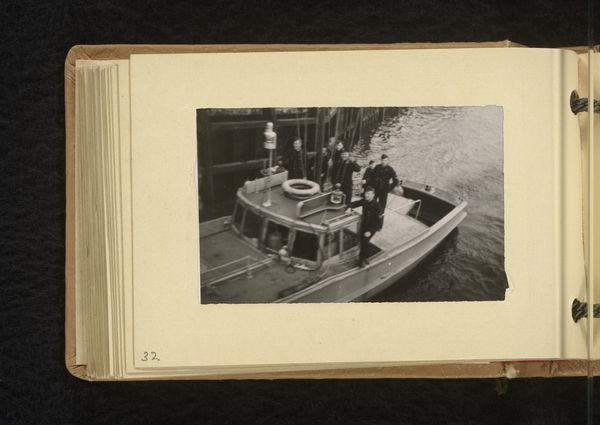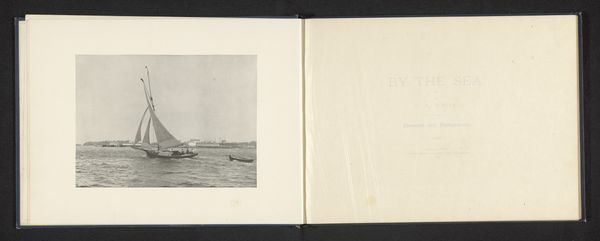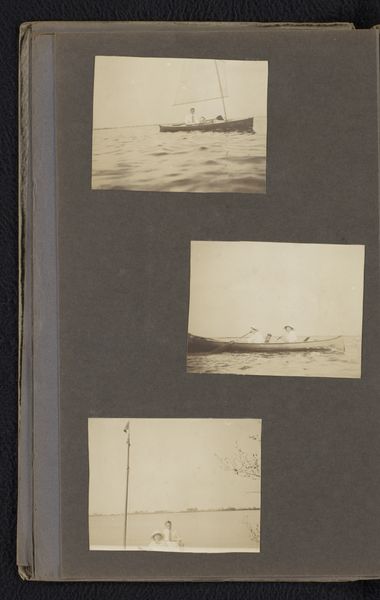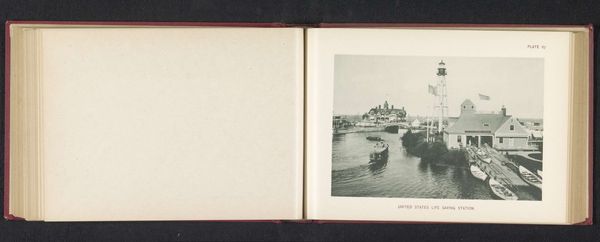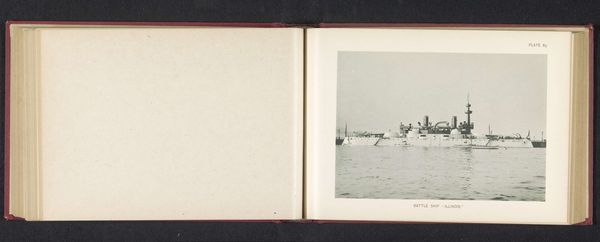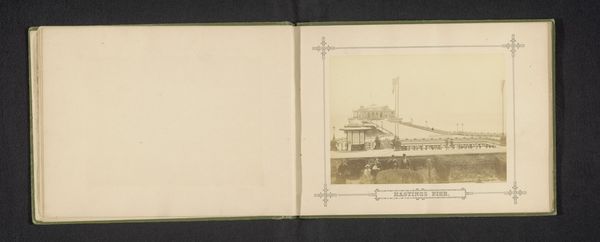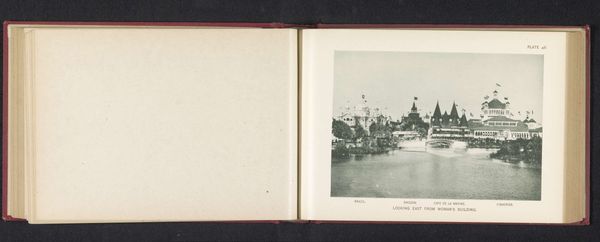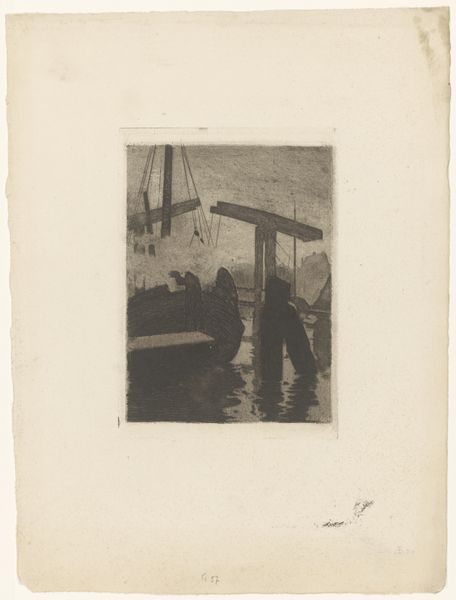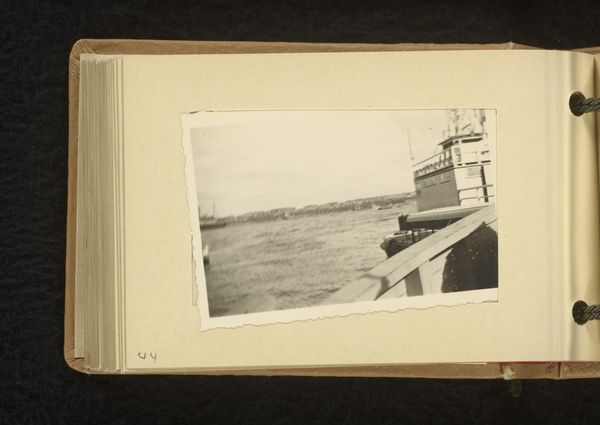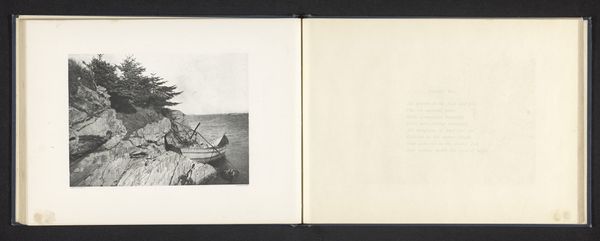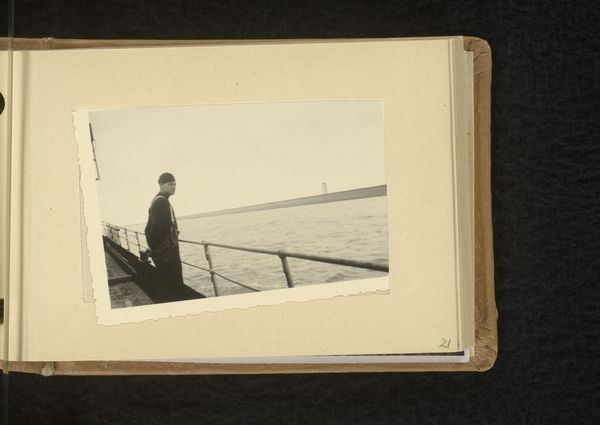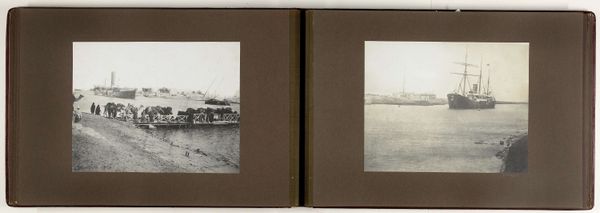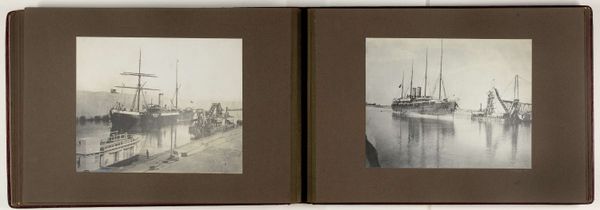![Honeymoon Album [verso] by Alexander Zhitomirsky](/_next/image?url=https%3A%2F%2Fd2w8kbdekdi1gv.cloudfront.net%2FeyJidWNrZXQiOiAiYXJ0ZXJhLWltYWdlcy1idWNrZXQiLCAia2V5IjogImFydHdvcmtzLzk0MTBhMzk1LTFhMzktNDEzNy1hZDc1LTJlNDZmNTM2YzIzZC85NDEwYTM5NS0xYTM5LTQxMzctYWQ3NS0yZTQ2ZjUzNmMyM2RfZnVsbC5qcGciLCAiZWRpdHMiOiB7InJlc2l6ZSI6IHsid2lkdGgiOiAxOTIwLCAiaGVpZ2h0IjogMTkyMCwgImZpdCI6ICJpbnNpZGUifX19&w=1920&q=75)
photography
#
portrait
#
landscape
#
photography
#
historical photography
#
historical fashion
Dimensions: overall: 24.3 x 16.7 cm (9 9/16 x 6 9/16 in.)
Copyright: National Gallery of Art: CC0 1.0
Editor: So this is "Honeymoon Album [verso]" by Alexander Zhitomirsky, from 1931. It looks like a photograph glued onto a kraft paper album page. The ship is stark against the water, but I’m drawn to how the photograph is mounted - not perfectly centered. What's your take? Curator: From a materialist perspective, consider the 'kraft' paper you mentioned. It's not just a backdrop, it’s an industrial product, cheaply made, and intended for utility. Pairing this with a carefully staged photographic print brings up questions of class, access, and the democratization of art production. How does this contrast with the presumably elite experience of a honeymoon depicted on the photograph itself? Editor: That’s interesting. So the choice of album paper is important, it isn't simply a neutral ground? It’s a deliberate decision commenting on production value, perhaps? Curator: Exactly. Consider the photograph: it's mass-produced, reproducible. The 'aura' of the unique artwork is challenged. Think about the labor involved in both – the factory worker churning out the kraft paper versus the photographer capturing an image and printing it. Were both considered “art”? Editor: I guess not, but nowadays they could be. What I am trying to ask, is the image only "completed" by how these distinct production contexts are put into relation? Is Zhitomirsky telling us something through the materials? Curator: Precisely. The materials – the photographic emulsion, the paper pulp, the glue holding them together – these all speak to processes, labor, and ultimately, consumption. It asks us to look beyond the surface-level image of a honeymoon and consider the means through which that image was created, distributed, and consumed. Even this 'album' tells a story, since we find the marks left by the rings of a binder: the circulation of images that go beyond an original event, to enter a commodity circuit. Editor: I never would have considered the album itself so integral to the artwork's message, or what an important tension exists between production of album, labor, art, and honeymoon. Thanks! Curator: A new perspective, perhaps? Materiality isn’t just about what things are made of, but what they mean, and how they position both the maker and the viewer.
Comments
No comments
Be the first to comment and join the conversation on the ultimate creative platform.
